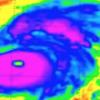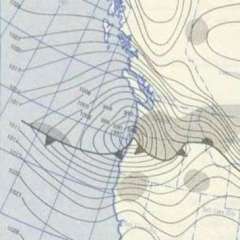-
Posts
221 -
Joined
-
Last visited
-
Days Won
4
Webberweather53 last won the day on July 15 2015
Webberweather53 had the most liked content!
Profile Information
-
Gender
Male
-
Location
Fayetteville, NC
-
Interests
Reading scientific literature, hockey (USA Hockey National Champion in 2013 :) ), golf, NASCAR
Recent Profile Visitors
707 profile views
Webberweather53's Achievements
Newbie (1/14)
140
Reputation
-

October 2019 Weather Discussion for the PNW
Webberweather53 replied to Timmy Supercell's topic in West of the Rockies
Well, no because ENSO evolves on timescales of a few years (or sometimes more), "weather" phenomena from days to weeks, you're comparing apples-oranges here. ENSO shouldn't be interpreted as a weather-related phenomena because it is not one even though it may be influenced by aptly timed subseasonal variability. The number of potential "n" ENSO events you can fit in a window of 70 years differs by several orders of magnitude from mid-latitude rossby waves for ex. -

October 2019 Weather Discussion for the PNW
Webberweather53 replied to Timmy Supercell's topic in West of the Rockies
70 years of ENSO data is practically nothing in the grand scheme of things, it would take several hundred years of data in a quasi-stable base state climate for actual ENSO signals to possess greater amplitude than internal, event-event variability. The modern record (post 1950) only represents a small fraction of the potential, legitimate interannual ENSO variability & corresponding ENSO extremes that are legitimately probable in our current climate. -
If the argument now is going to be that this isn't a NINO event based on some highly subjective analysis of the distribution of OLR in the Pacific & Maritime Continent that's obviously fraught w/ personal biases, the OLR/precipitation indices are both in NINO territory (above 0.5 sigma which roughly corresponds to the CPC ONI threshold in terms of sigma) in January & going to be even higher for February.
-
We often see even stronger IO forcing signals in bonafide weak-moderate NINOs but that clearly doesn't make them any less NINO so this point is pretty mute in the context of modern events if you're going to play the E hem interference card. What's very obvious here which is the point of what I've been saying this entire time is we've already significantly deviated from the "normal"/average state in the Pacific. You will not see a predominant, anomalous, persistent convective anomaly near the dateline during "normal" or near-normal ENSO, that's pretty elementary knowledge.
-
This I can definitely agree with, the subtropical wave activity last spring was the first big clue of a NINO attempt at least in 2018-19 w/ 2019-20 dependent in large part on the intensity of the former and clearly kickstarted the evolution to this year's weak dateline NINO with major hiccups along the way in the general form of the E Asia Monsoon circulation last summer and SSWE + simultaneous S Hem final warming earlier this winter setting off the IO-MC.
-
Lol what? The graphic I posted showed surface OLR for Nov-Dec-Jan-Feb of this year. I could have also shown the past month or even removed it but the OLR spatial distribution would be roughly the same w/ -OLR just barely west of the dateline.
-
Yes and this EOF is not included in the RMM, it explains ~20-25% of the MJO's variance largely near the eastern edge of the warmpool in the CP. The RMM index would look considerably different w/ the inclusion of EOF 3 & I'm honestly not sure how you'd be able to produce easy-to-understand 2-D graphics of said index in real-time which is one reason aside from the fact that EOFs tend to come in pairs (although this is a special case of a triplet), why they haven't used it already.
-
It's not at 160E, it's really more like 170E because if you actually looked at the posted composite the anomalous convection is centered between 160-180E, which is virtually right at the dateline, that's not in fact normal/ ENSO neutral by any means, the base state has clearly already moved towards El Nino and it's nice to see the CPC actually acknowledge that.
-
No, the AAM is actually indicative of the forcing of the waves that and background flow whose momentum fluxes are reflected onto this diagram. This is globally & vertically integrated AAM in the troposphere, I thought you knew that already lol perhaps you should read up on the classical papers by Weickmann et al?
-
There are also none, absolutely zero cases of an oncoming El Nino being coupled to a low-level descending easterly QBO regimes, so this to some extent is a mute point because the forcing here is considerably different than any other event in the satellite era! It's an apples-oranges comparison you're trying to make plus 1978 is a good example of fairly considerable E hem propagation in light of a weak NINO w/ multiple, strong-very strong passes into the E Hem I'm not referring to the WPac dominant mode, (EOF 1), I specifically said EOF THREE which is NOT in the RMM... Ugh.
-
The subseasonal signal has regularly passed thru and past the dateline unimpeded like it is now & has been for the past month or two, that only happens when the base state has significantly shifted towards El Nino. You should also be reminded &/or be aware that RMM actually does a poor job at reconciling the advancement towards El Nino conditions, the 3rd EOF that's not included in the leading pair actually describes exactly that and is an important component that's missing in the popularly cited index. There's some nice literature out on this from Roundy & others that discuss what happens to the MJO-ENSO relationships if the 3rd EOF was included.
-
The glaring issue with this is that this so-called intrahemispheric disconnect is not ENSO neither is the prominent intraseasonal forcing this season directly related to ENSO. ENSO only provides some of the input forcing to these, the rest is dominated by the QBO & mid-latitude internal variability including SSSWEs which both aren't actually ENSO itself but signals that have already been modified by other prominent sources of external variability. It's the equivalent of saying because we have a -PNA right now that must mean we have an ongoing La Nina or vis versa, they're only extracirricular expressions of ENSO and don't directly reflect what happens in the tropical Pacific which is in fact ENSO. As for a lowpass signal, it would be very unusual to see convection consistently near 160E to the dateline in neutral ENSO, the same anomaly structure existed before this month too.
-
It's pretty obvious this winter wasn't a neutral one, convection rarely gets consistently past the 160E longitude in the Pacific unless we've already made a significant advancement away from neutral ENSO conditions, this was already happening before this massive bout of NINO forcing this month.
-
You of all people should know better than to make a white & black call on ENSO based on one parameter. If you want to play this game, that's fine... We'll meet the Trenberth & Hoar (1997) definition w/o a problem and we're only 0.02C, yes just 0.02C shy of the CPC's definition thanks to ASO when you use a ton of datasets. It's still an El Nino
-
This +AAM anomaly we have right now is almost exclusively driven by NINO forcing from the tropics and has surpassed +3.0 sigma



